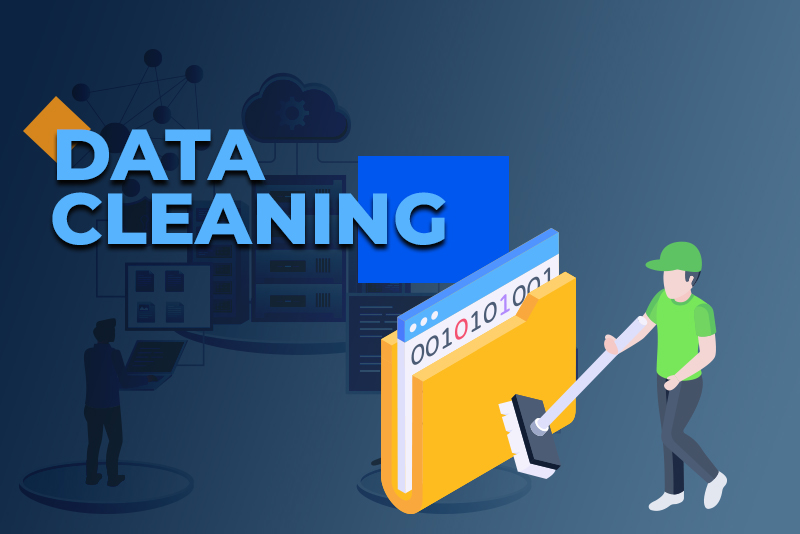Today, the amount of data is growing as quickly as the number of technological enterprises globally. In business analytics, the quality of data is more important than its quantity. Organizations are starting to recognize that conventional data management solutions are inadequate to handle the complexity of modern data. Therefore, businesses are using techniques such as data profiling and data cleansing with the help of data cleansing companies to ensure the quality of their data.
Every company has experienced problems such as abrupt wake-up calls with unsuccessful migration or transformation programs brought on by bad data, a lack of data quality management tools, and a reliance on obsolete techniques that are no longer useful. To prevent such errors, it is essential to profile and analyze the data before putting it into any data management repository. Data quality assurance is an ongoing activity that needs to be integrated across systems and departments as well as inside them. Furthermore, the distribution of data control should be balanced between IT and business users, and the business users are the genuine owners of customer data and who, as a result, need to be provided with technologies that allow them to profile and clean data independently of IT.
Data Profiling and Its Importance
The monitoring and cleaning of data using a methodical, regular, repeatable, and metrics-based procedure is known as data profiling. It is typically the first action you do to take control of your data. Its objective is to determine the state of the data that is kept throughout your firm in various places and formats. A data source will be connected to a data profiling tool. Then, it will give you a significant amount of insightful information about the cleanliness and quality of your data. This information is crucial to the process of enhancing the quality of your data. Data profiling is crucial for a number of reasons. The amount of data that businesses must manage on a regular basis is one aspect and the other factor is to ensure data quality. Data profiling can help prevent missed sales opportunities and poor business decisions.
What Is Data Cleansing and How Is It Important?
Data cleansing, sometimes referred to as data cleaning or scrubbing, is the process of locating and correcting mistakes, duplicates, and unnecessary data in a raw dataset. Data cleansing is a step in the data preparation process that produces correct, tenable data that can be used to create trustworthy models, visualizations, and business choices. The quality of analysis and algorithms depends on the data upon which they are built. Organizations estimate that almost 30% of their data is erroneous on average. Companies lose 12% of their annual revenue due to this inaccurate data, but they also suffer other losses. Data that has been cleaned is reliable, accurate, and consistent, allowing for wise conclusions. Additionally, it identifies locations where upstream data entry and storage settings might be made better, saving time and money both now and in the future.
Difference between Data Profiling and Data Cleansing
The main distinction between the two processes is simple and clear: one checks for problems, while the other allows you to correct them.
Both data profiling and data cleansing are not new concepts. However, they have mainly been utilized in data management systems for manual tasks. To discover fundamental mistakes, for instance, data profiling has always been carried out by IT and data professionals using a combination of algorithms and codes. Even then, significant inaccuracies would be missed during the weeks-long profiling procedure. Cleansing the data was yet another nightmare. Cleaning up a database and deleting duplicates could take months (with a very low accuracy rate). While these techniques may have been effective for straightforward data structures, it would be close to impossible to use them with contemporary data formats.
Best Practices for Data Cleansing and Profiling
Prior to importing the data into any data management repository, it is essential to profile and analyze the data. The following are just some of the many aspects of design that data profiling can assist with:
- Evaluating the consistency, completeness, and range of values of the data in a source and across all sources
- Finding the source characteristics that are suitable as matching elements
- Figuring out which source properties are off limits for use in matching. These characteristics could have a detrimental effect on the matching’s efficiency or outcome.
- Detecting the reference data, ensuring its consistency, and determining its similarity across sources
- Determining the attributes that can be incorporated into faceted search
- Data mapping from consumer data sources to the target model.
The two primary functions or elements of a data quality management solution and the starting points of any data management program are data profiling and data cleansing. Simply said, you need to understand the problem with your data in order to fix it. So, to ensure the quality of data, businesses can invest in data cleansing companies. They help in validating the relevance of data which in turn enables businesses to be more productive and increase ROI.
| MOS is a business process outsourcing company that provides data cleansing and other related services such as data entry, document scanning, and data conversion to businesses of all sizes. Call (800) 670 2809 if you have any queries. |




